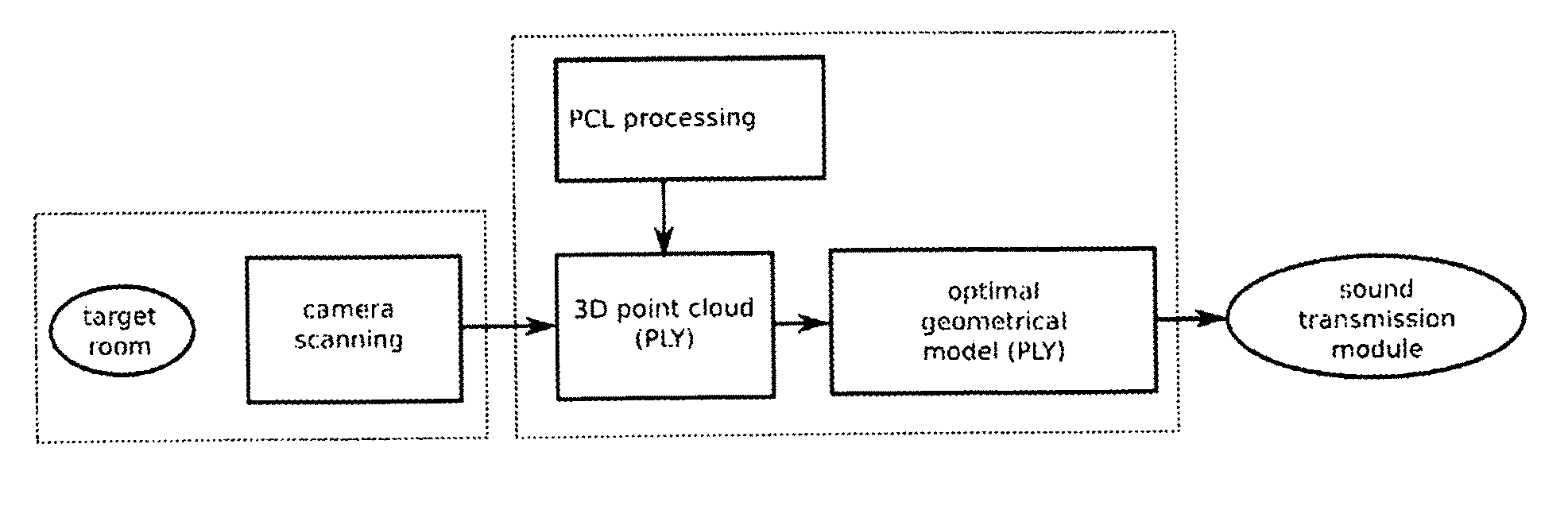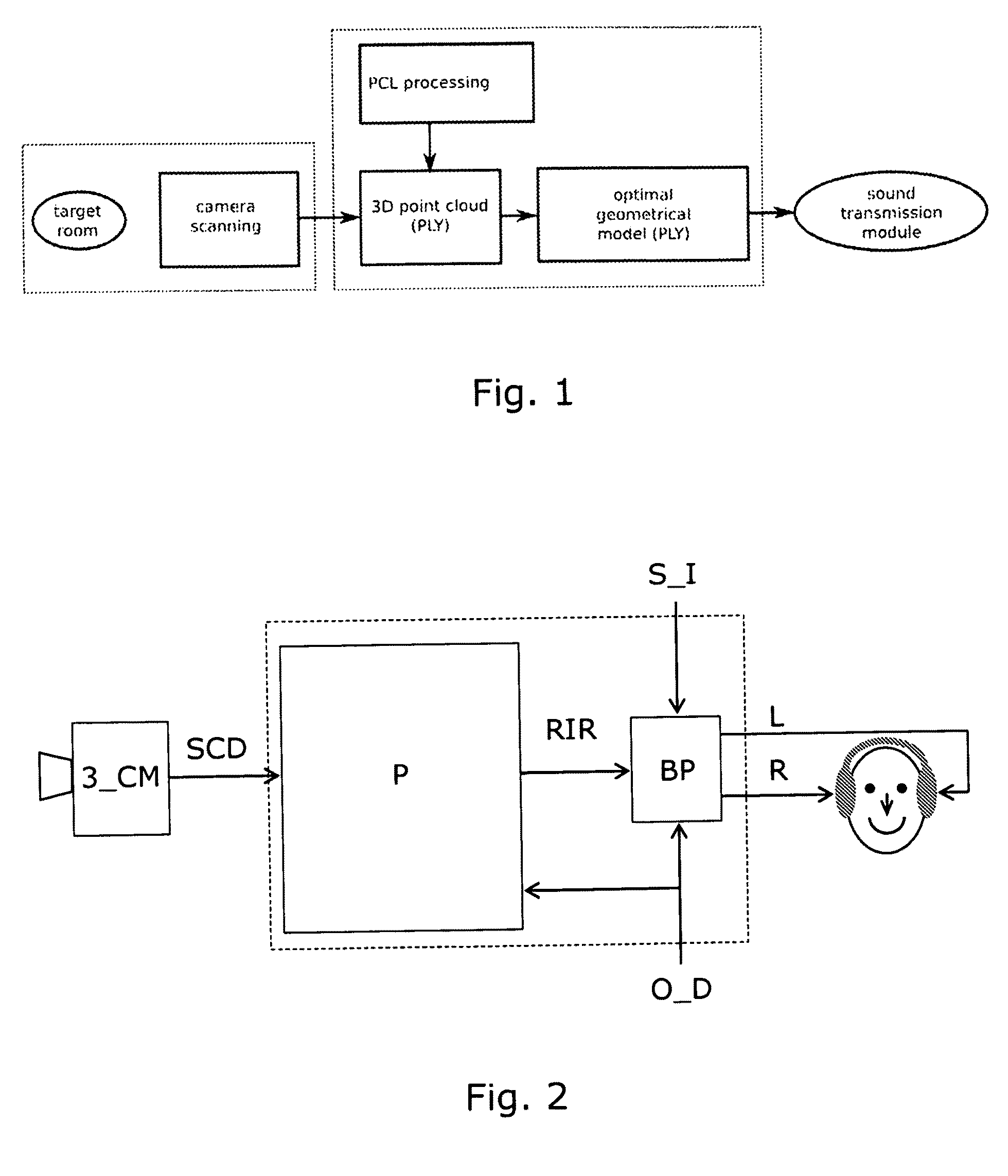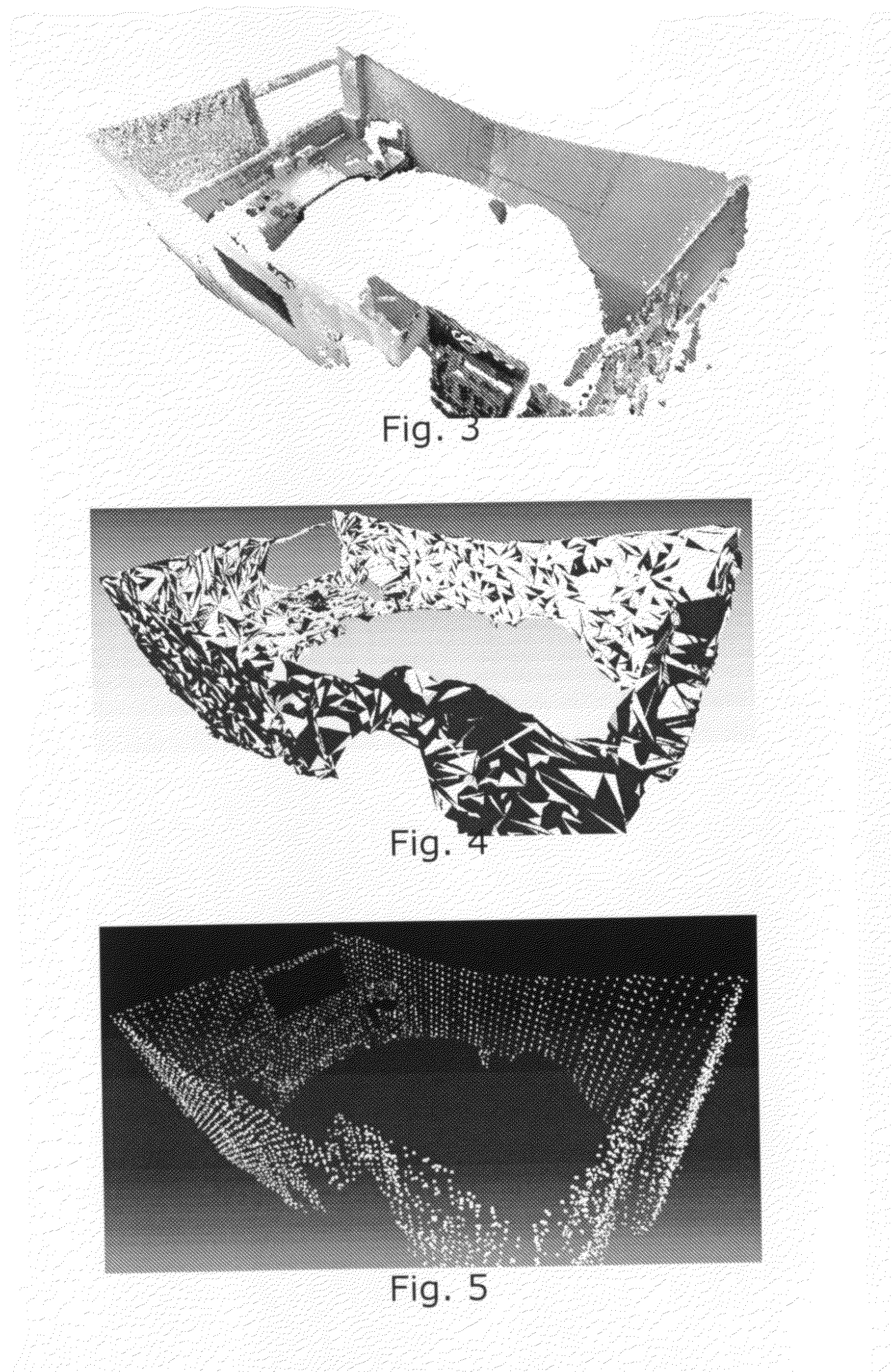Method and device for modelling room acoustic based on measured geometrical data
a geometrical data and measurement method technology, applied in the field of acoustics, can solve problems such as limiting the processing power required for real-time rendering
- Summary
- Abstract
- Description
- Claims
- Application Information
AI Technical Summary
Benefits of technology
Problems solved by technology
Method used
Image
Examples
Embodiment Construction
[0053]FIG. 1 illustrates an embodiment where a depth camera, e.g. Kinect™device, provides data that allows a 3D cloud point data representation of the room. The whole procedure from a room scanning to the sound transmission module of a room acoustics modelling software comprises two steps. First, the room interior is scanned with the depth camera (Kinect™) using 3D scanning software. Then, the 3D point cloud of the room is processed using the Point Cloud Library (PCL) [www.pointcloud.org], in order to make an optimal room geometrical model for the sound transmission calculation.
[0054]The proposed method is independent of the input scanning device (“depth camera”). In general, all scanning devices that provide a boundary description of a scanned room interior can be used to obtain a 3D point cloud model. Still, there are several commercially available types of cameras that employ different techniques. Cameras that can acquire a continuous stream of depth images are available. Most of...
PUM
 Login to View More
Login to View More Abstract
Description
Claims
Application Information
 Login to View More
Login to View More - R&D
- Intellectual Property
- Life Sciences
- Materials
- Tech Scout
- Unparalleled Data Quality
- Higher Quality Content
- 60% Fewer Hallucinations
Browse by: Latest US Patents, China's latest patents, Technical Efficacy Thesaurus, Application Domain, Technology Topic, Popular Technical Reports.
© 2025 PatSnap. All rights reserved.Legal|Privacy policy|Modern Slavery Act Transparency Statement|Sitemap|About US| Contact US: help@patsnap.com



